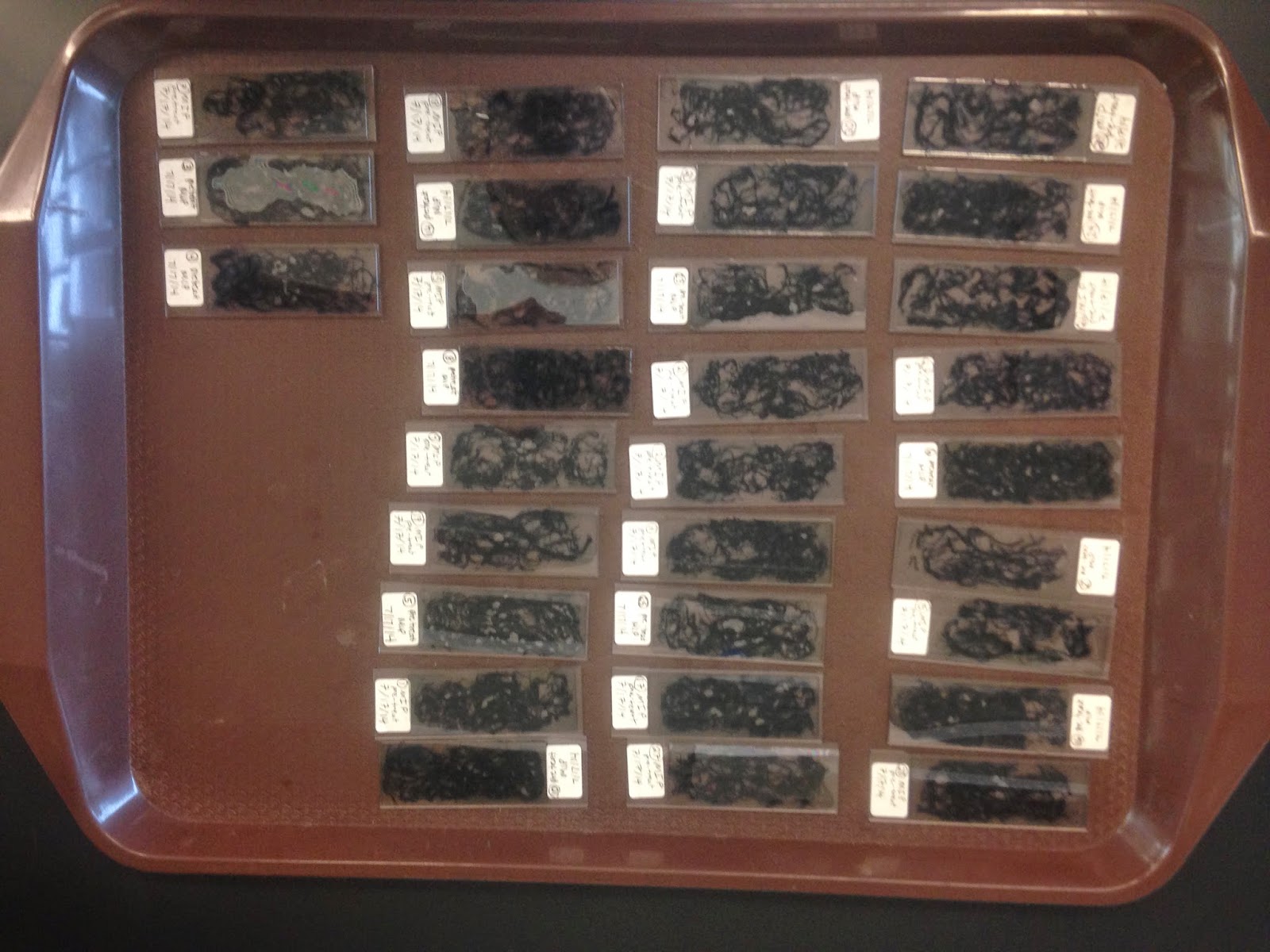In other great news, the MIP* was harvested just after the corn plants matured enough to develop significant relationships with potential mycorrhizal fungi in the soil. The corn plants were grown in order to look at how our different soil treatments varied in terms of the presence of mycorrhizal fungi. Did the native inoculum truly have mycorrhizal fungi? Was the sterilized soil truly sterile? In addition to confirming our treatments, analyzing the MIP also provides a baseline, or a starting point, of how much mycorrhizal fungi was present before we started our experiment.
 |
| The MIP just before harvest |
As a reminder, our green roof experiment has several different treatments of soil and we want to analyze if and how mycorrhizal fungi benefits a green roof.
In order to analyze the mycorrhizal fungi in the soil, the roots have to be harvested since the fungi live inside the roots. But first, the above ground biomass is harvested, dried and weighed. Obviously, the plants with the most above ground biomass were the strongest and healthiest. We want to quantify the above ground biomass as a confirmation our results of the below ground biomass.
After harvesting the above ground biomass, the below ground biomass, or the roots, are left in their respective "conetainers" and then are placed in the freezer until we are ready to begin washing the roots. The freezer halts any decomposition that may be happening in the soil which could artificially lower our results. Once the roots are ready to be washed, they are taken out of the freezer and placed in a series of water baths to ensure that the roots are clean and not "being weighed down" by any extra soil, which would also skew our results.
Once the roots are washed, 0.15 grams is weighed out to be stained and placed on a slide. The roots are first cut into 4-5 1" sections where roots are taken from each section in an effort to sample in a stratified manner. These roots will be examined under a slide for mycorrhizal fungi relationships. The rest of the roots are weighed and dried to determine the below ground biomass weight.
 |
| Sarah cutting corn roots into sections |
This very time consuming process will tell us everything we need to know about the health and virility of our different soils; it will quantify the amount of mycorrhizal fungi in our different soils.
*For more information on what the MIP is, please refer to my first blog post :)










.jpeg)
.jpeg)

.jpeg)
.jpeg)